Saturday, May 7th - Wednesday, May 18th
Back in Philadelphia for another day, we did the city bus tour. This is City Hall.
Some sort of protest was going on out front.
A few old landmarks around the city.
Basilica of Saints Peter and Paul Cathedral.
In 1890 the city purchased a cast of Emmanuel Fremiet's original statue of Joan of Arc in Paris, which he sculpted in 1874 for Napoleon III. It is gilded bronze and sits on the east side of the Philadelphia Museum of Art. Joan was a peasant girl who believed she could save her country of France from the would-be English conquerors. She led the French army in a momentous victory at Orleans in 1429 during the Hundred Years War. She was captured by the English in 1431 and tried as a witch. At the age of 19 she was burned at the stake. In 1455 a retrial was ordered and the earlier verdict was overturned. Oops, a little too late for Joan. She became a national heroine and a legend. On May 16, 1920 she was canonized by Pope Benedict XV. A weird bit of trivia, the sculptor chose a 15 year old girl named Valerie Laneau as his model who, at the age of 77, also burned to death while trying to light her evening lamp.
The Rocky Steps leading up to the Philadelphia Museum of Art where Rocky Balboa trained in the Rocky movies. They were busy setting up tents for some big weekend event.
Close-up of some of the architecture.
Just to the side of the bottom of the steps, kids were lining up to have their pictures taken with the Rocky statue.
Across the street from the steps is the Washington Monument Fountain in the Eakins Oval traffic circle which forms the northwest end of Benjamin Franklin Parkway. There is lots of traffic here because it connects the Parkway and Martin Luther King, Jr. Boulevard to the core of the city. During parades and major events, such as the Thanksgiving Day Parade and the Budweiser Made in America Day Festival, the roadways are shut down and the oval becomes center stage for gatherings. The oval is named for Philadelphian, Thomas Eakins, world famous realist painter and fine arts educator. The bronze and granite statue was sculpted by Rudolf Siemering and dedicated in 1897 with Washington and his horse facing southeast down Ben Franklin Parkway toward City Hall. His face was made from an impression made while the president was still alive. The statue is flanked by two smaller fountains and the lowest level features animals native to the U.S., including a buffalo and a bear, and Native Americans, including a fisher woman pulling in her nets. Beneath the Eakins Oval and the surrounding area run two tunnels originally built for rail traffic in the 1920s. One still carries freight trains. The upper tunnel carried street cars until 1956, but currently carries westbound traffic to Spring Garden Street Bridge over the Schuylkill (pronounced skoolgul) River.
Welcome Park at Penn's Landing with the Ben Franklin Bridge in the background, which opened in 1926 as the first single span structure in the world. Penn's Landing Waterfront Park was the location of a covert CIA plan named Jennifer Project. A ship was built in the early 1970s and played a key role in the U.S. Cold War espionage. Its mission was to obtain intelligence by recovering a sunken Soviet submarine three miles deep in the Pacific Ocean. Portions of the sub were raised by the ship's huge claw in 1974. Six Soviet submariners were recovered and given a burial at sea.
Across the Delaware River at the Camden, NJ. waterfront is the WWII Battleship New Jersey Museum.
At Penn's Landing is the Patriot's and Pirates Seaport Museum and the Adventure Aquarium. Also, harbored here at the riverfront park, are the USS Becuna, the USS Olympia and the Moshulu (black with white hull), an elegant floating restaurant. The white ship is the cruiser Olympia launched in 1892, the oldest steel warship afloat today. It was the flagship of Commodore George Dewey in 1898 during the the Spanish American War in the Battle of Manila Bay in the Philippine Islands. Following the war it was often used as a visible reminder of President Teddy Roosevelt's gunboat diplomacy, "Walk softly and carry a big stick." Her final mission in 1921 was to bring back from France the body of the Unknown Soldier to his final resting place in Arlington National Cemetery. The submarine Becuna, which was moored behind these two ships, was launched in 1944 and commissioned to serve in the Southwest Pacific Fleet under General Douglas MacArthur. It did five combat patrols during WWII and served through much of the Cold War and was decommissioned in 1969.
The concrete tower with the flag on top is a monument to Christopher Columbus that was erected in 1992 to commemorate the 500th anniversary of his discovery of America.
This is a really nice park with lots of stuff to see and do. You can rent paddle boats and kayaks here.
They have oversize games of chess, connect four and jenga. They have lots of colorful hammocks hanging between the trees for your relaxation and lots of little food trucks and a few selling souvenirs.
Across the street is the very elaborate Philadelphia Vietnam Veterans Memorial.
We walked a few blocks south from there to see the Gloria Dei (Old Swede's) Church, the oldest church building in Pennsylvania, a National Historic Site.
The initial congregation were Swedish Lutherans who came to "New Sweden" in 1643. The church was founded in 1677 and they are still using the original baptismal font, as well as the carving of the cherubim and Bible on the front of the organ. Some of the headstones in the cemetery date back as far as 1721, those that were still readable. The graves of eight officers from the Revolutionary War are here.
Asian Pacific American Heritage Month was being celebrated in Franklin Square Park which is now pretty much surrounded by China Town. Many locals use the park for their early morning practice of Tai Chi exercises to promote spiritual and physical well-being. Franklin Square was the original site of the German Reformed Church and burial ground. The church had received land from a grant by Thomas Penn, son of William Penn in 1741. There were over 3,100 congregants interred here from 1741 to 1799. The city of Philadelphia contested the grant for decades, contending that William had designated the entire northeast square for public use. In 1836 the Supreme Court overturned the grant made by Thomas and the land was returned to its original use as a common space. One of the people buried here was Philip Phile, composer of The President's March, which was the music for the nation's first anthem Hail, Columbia, as well as music for the inauguration of George Washington in 1789. The church still has an active congregation at another location.
Panda Bear Paradise: The panda spreads the friendship of the Chinese people around the globe as an ambassador.
Windmill Gallery: A landscape of windmills, wooden shoes and tulips represents the culture and beauty found in The Netherlands and surrounding countries. Tulips are the national flower of the Netherlands, Iran, Turkey and several other countries, often praised as the Queen of the Flowers and the symbol of fashion and internationalism.
Chinese Dragon: Symbolizes potent and auspicious powers, particularly control over water, rainfall, typhoons and floods. The dragon is also a symbol of power, strength and good luck for people who are worthy of it.
Insect Lanterns: Living in harmony with nature.
Zebras and Giraffes: Highlights the alliance they share to defend themselves from predators. Giraffes have a wider view of vast grasslands, while a zebra's sense of smell helps defend their lives on the Savannah. Combining their skills, the creatures coexist peacefully.
A little interesting trivia I picked up at their festival, recycling one aluminum can conserves enough energy to run a TV for three hours. If every U.S. household replaced three light bulbs with compact fluorescent bulbs, we would save a trillion pounds of green house gases.
We had lunch in Chinatown at the Bar-Ly Pub and walked back through a big shopping mall that had an outdoor court with shuffle board, bean bag toss and other games.
Heading back home over the Franklin Bridge.
I would have liked to stay and seen the Chinese lanterns all lit up after dark, but we had already put in a long day and we old folks really need our beauty sleep.
Sunday, May 8th, Mother's Day, we drove over to Valley Forge, 18 miles northwest of Philadelphia. The Fort Moore redoubt is being rebuilt on its original site.
These are replicas of the barracks that the troops built and stayed in over the winter of 1777-78 at Valley Forge. There were almost 2,000 huts in long rows over the rolling hillsides, surrounded by defensive trenches and five earthen forts, or redoubts, at strategic high points.
Commonwealth of Massachusetts Monument.
This National Memorial Arch was authorized by Congress in 1910 and dedicated in 1917. The Freemasons gave $1.5 million to preserve the deteriorating arch in 1997 on its 80th anniversary. Washington served as Master of his Masonic Lodge while he was President. The names of all the officers are listed on the inside of the arch.
General "Mad" Anthony Wayne looking toward his home at the bottom of the hill. He is buried at St. David's Church on Valley Forge Road in Wayne, Pennsylvania.
Train Station and museum on site of General Washington's command post and living quarters during their winter encampment in the third year of an eight and a half year struggle.
The industrial village that was here on the Schuylhill River is long gone, but this is the house where Washington had his headquarters. Martha always journeyed to the winter camp to be with George for the duration of the war. In the early 1700s it was a small village typical of isolated rural villages on a river with paper, flour and woolen mills, iron forge, sawmill, gristmill, company store and tenement housing that grew up around the forge it was named for. The railroad was built in the 1840s. Industry gradually moved to the cities in 1880s and the village declined. Pennsylvania established a state park here in 1893. President Ford signed legislation making it a National Park at the Bicentennial of the Declaration of Independence July 4, 1976. The park covers 3,600 acres of rolling hills. The General's headquarters was the Pentagon of its time. He ran the Revolution from this small, urgently busy house. He and aides issued orders, analyzed intelligence, translated documents from French and Spanish, interviewed European officers seeking appointments, debriefed American spies and managed prisoner exchanges, all documented by hand.
General Washington. The Commander-in-Chief's Guard was an elite force living in huts surrounding his headquarters. They were always present to protect him, his official family, equipment, supplies and papers. He required each guard to be a native-born American, assuming such men would be loyal. That is a tradition that continues today with the Third U.S. Infantry that stands guard at the Tomb of the Unknown Soldier at Arlington National Cemetery.
New Jersey Brigade Monument.
Baron Von Steuben came from Prussia and trained the officers and Washington's guards, who in turn trained the others. Many early difficulties of the army were due to lack of standardization. He stressed drilling and discipline and standardized the marching step and the size of the units. He later wrote the first comprehensive U.S. Army military manual, known as the blue book. The foundation of the army was created at Valley Forge with concepts of basic training, the officer's corps and establishment of the branches of the army, such as Corps of Engineers. The manual defined everything from uniforms and equipment to unit composition and field maneuvers. Originally written in French, it was translated by two of General Washington's aides-de-camp, Alexander Hamilton and John Laurens.
The Washington Memorial Chapel and Carillon is a national memorial to George and all of the American patriots at Valley Forge. The statue in the foreground is Nathanael Greene, Commander of the Southern Army, Quartermaster General at Valley Forge.
The architectural design was by Milton B. Medary, Jr. with 13 stained glass windows for the 13 colonies. It is described as an amazing poem in stone, telling the story of creation and the rise and progress of the American nation. The George Washington window is in the nave with five windows along each side dedicated to various American patriots, including Ben Franklin, Alexander Hamilton and the Marquis de Lafayette. Christ over the altar is dedicated to Martha. The Lafayette window over the organ has the inscription "To the glory of God, in honor of Lafayette and in grateful tribute to Louis XVI and the French people through whom America won her freedom". Like all the windows, it has both a central theme "The Window of Settlement" and a text from the Bible. It consists of 12 panes, each depicting a separate, significant event in the settlement of America, highlighting a variety of religious beliefs and the ethnic makeup of early settlements.
Someone was taking pictures of their daughter in the "Cloister of the Colonies" and I couldn't resist taking one myself. They also have the Justice Bell here. It is a copy of the Liberty Bell with the addition of "establish justice" to the inscription. It was used from 1915 to 1920 to gain support for the campaign for women's suffrage. The clapper of the 2,000 pound bell was chained to its side and not rung until after the passage of the 19th Amendment in 1920. The 1915 whistle stop tour in Pennsylvania covered over 51,000 miles in less than six months visiting villages, towns and cities in all 67 counties, a gala occasion in every town with speeches, parades, horses, cars, banners, flags and bands.
We ate supper at the food court in the King of Prussia Mall and headed back to camp. The King of Prussia Mall opened in 1963, but has continually expanded. It has more dedicated retail space than any other shopping mall in the country, including 8 department stores, almost 400 boutiques and specialty shops, over 40 restaurants and even a car dealership. It is so large that several stores have two or three locations within the mall. Plus it is surrounded by a 16 screen theater with IMAX, Costco, Walmart, a supermarket and the largest Target on the east coast. Wikipedia lists it second after the Mall of America in size, but the internet lists it as 28th largest in the world and the Mall of America as 29th. The largest in the world are three in China and three in the Philippines, some with as many as a million visitors a day.
Monday we moved back to Gettysburg Campground and did the ranger led tour of Soldier's National Cemetery there. Memorial to Abraham Lincoln near the entrance.
The graves of over 6,000 U.S. servicemen are here, including 3,580 Union soldiers killed during the Civil War, nearly half of which are unknown. They are arranged in a concentric semi-circle around the original hilltop city cemetery.
Close up of how the names are engraved on the semi-circles of concrete. The bodies are arranged by the states they were from. The bodies were carefully removed from the battlefield where they had temporarily been interred and re-interred. The work took five months.
Nearly 20,000 statesmen, soldiers and citizens converged on this hill for the dedication on November 19, 1863. A two hour speech was given by the country's most noted speaker, the Honorable Edward Everett, former Governor of Massachusetts. President Lincoln followed with his Gettysburg Address of two minutes, ten sentences. He left believing his remarks disappointed the people and would little be remembered. "The world will little note, nor long remember what we say here today...." I'm guessing a whole lot of people would know where that quote comes from.
Soldier's National Monument was having a little restoration done. It was dedicated in 1912 along upper cemetery drive to commemorate the spot of the Gettysburg address, which was actually given from a platform in the original part of the city cemetery on the hilltop.
Major General John Reynolds who was killed at Gettysburg. The tall one in the background is for the officers and soldiers of the state of New York who fell at the Battle of Gettysburg.
Maryland and Delaware Monuments just outside the cemetery entrance near the visitor center.
Wednesday we visited Harpers Ferry. The first primitive ferry was established here in 1733 and sold to Robert Harper in 1747. It was used until 1824 when a bridge was built across the Potomac. George Washington chose Harpers Ferry in 1795 as the nation's second national armory. It manufactured over 600,000 muskets, rifles and pistols up to the outbreak of the Civil War. In 1803 Merriwether Lewis supplied his Corps of Discovery with guns and other goods produced at the armory. At that time the armory consisted of ten buildings. In 1819 inventor Captain John Hall's new method of fabricating arms exactly alike revolutionized the industry and was adopted all over the world.
This is a replica of a folding boat that Lewis designed, had built and tested here on the Potomac for their expedition. They covered it with hides and pitch or something. When they tried to use it on the expedition, it failed for some reason, so they buried it in a cache somewhere along the Missouri River bank and it has never been found.
The Baltimore and Ohio Harpers Ferry Railroad Station was established in 1836 here at the confluence of the Shenandoah and Potomac Rivers in a gap of the Blue Ridge Mountains. Charles Carroll, the only living signer of the Declaration of Independence, laid the cornerstone for the railroad on July 4, 1828 starting the first rail transportation in the U.S. The railroad crossed the Potomac at Harpers Ferry in 1837 and business bombed. The Civil War shattered the town's prosperity. Much of the town was destroyed, but the Baltimore and Ohio survives today as a main artery of transportation in the U.S.
There were numerous excursion trains from the 1880s to 1930s. The railroad bought Byrnes Island in the Potomac and renamed it Island Park and created a summer resort with pavilions, dining tent, refreshment stands, swings, skating rink, merry-go-round and Ferris wheel. In 1861 Virginia militiamen descended on Harpers Ferry to seize the arms, including 15,000 rifles, stored at the federal armory. The retreating federals set fire to the armory and arsenal. This boat ramp was the site of two daring escapes in the Battle of Harpers Ferry. Under cover of darkness 1,400 Union cavalrymen fled on horseback down the ramp, crossing a pontoon bridge into Maryland on Sept. 14, 1862. The next day the Confederates captured the remaining 12,500 Union soldiers, among them free black laborers. At the ramp Confederate soldiers began dragging free black laborers away, claiming the Union was stealing their slaves. Union Colonel Trimble shouted, "My men are unarmed, I am not. Unhand them!" Then he ordered "Regiment march", swiftly moving both laborers and soldiers past Confederate guards, down this ramp and across the pontoon bridge to safety in the North. General Robert E. Lee captured Harpers Ferry that day. It was the largest surrender of U.S. troops until the fall of Bataan and Corregidor in WWII.
In 1859 John Brown attempted to end slavery by seizing the armory and organizing the Blacks. Mayor Fontaine Beckham and his black friend, the railroad baggage master, Heyward Shepherd, were the first killed. John Brown was charged with the mayor's murder. This is the Federal Armory's fire engine house, where John Brown and his raiders were captured by the U.S. Marines on Oct.18, 1859. They were barricaded inside this building, called John Brown's Fort or John Brown Monument, and held off the local militia and the marines for three days. John Brown was convicted of murder, treason and inciting slaves to rebellion and hanged in nearby Charles Town on Dec. 2, 1859. He say on his own coffin enroute to the gallows. The building has been moved four times, including all the way to Chicago in 1891 for the World's Fair, and finally ended up back here in 1968, just 150' south of its original location. John Brown was called a martyr by some and a madman by other. Famous orator and former slave, Frederick Douglas, later proclaimed that Brown's fight here began "the war that ended slavery."
We crossed the railroad trestle here and walked a small bit of the Appalachian Trail.
Hiking our small bit of the trail.
Back in town, we decided to hike up the hand-carved steps to St. Peter's Catholic Church, built in 1830s. The priest flew the Union Jack during the Civil War as a symbol of the church's neutrality, to protect it from Union and Confederate shells. In the fall of 1864 over 40,000 U.S. soldiers were in the vicinity, plus Confederate prisoners, deserters, former slaves and thousands of horses. The old armory buildings served as Quartermaster's Depot supplying weapons, food, uniforms and equipment. 1,000 wagons with 6,000 mules continuously rolled through Harpers Ferry to Union troops in battlefields in the Shenandoah Valley. Lincoln visited Harpers Ferry one week after the Emancipation Proclamation. In his last speech on April 11, 1865, he proposed giving the right to vote to African Americans. Actor John Wilkes Booth was in the audience and said he would kill him for this proposal. Three nights later he became one of the last casualties of the Civil War.
Then we kept on hiking up to Jefferson's Rock.
Thomas Jefferson came here often for the best scenery and sweeping views of the two rivers and the town. He described the view as "worth a voyage across the Atlantic". In 1860 sandstone supports were placed under the rock to keep it from endangering the lives and property of villagers below.
Hiking back down past the ruins of St. John's Episcopal Church built 1852. It was used as a hospital and barracks during the Civil War and received considerable damage.
Part of the Harper Cemetery, four acres overlooking the point where the Potomac and the Shenandoah meet were set aside by the optimistic Harper when there were only three houses in town. Robert Harper completed his new home in 1782 and died that year. He had no family and left his home to his niece, Sarah Harper Wager, whose granddaughter, Sarah Ann, married Noah H. Swayne in the house. Referred to as The Mansion, it was owned by the Swayne family 89 years. It is the oldest surviving structure in town and has been a tavern, residence, rental, abandoned ruin and is now a restored exhibit. On Jan. 21, 1862 Noah Swayne was nominated by Lincoln as his first appointee to the Supreme Court and served 19 years, working to improve the status of African Americans.
Thursday we visited Fort McHenry at Baltimore. The flag flying over the fort may not look very big, but just check out the picture below to see how big it really is. The successful defense of Baltimore from British attack has been remembered since 1814. In 1836 surviving soldiers met at the fort and vowed "never to disband". In 1880 the last 12 surviving veterans made a motion to include sons and grandsons, and the Society of the War of 1812 was born. Today a nationwide organization of descendants do commemorative activities, restore cemeteries and historic forts and fund scholarships.
An American flag flies over Fort McHenry 24 hours a day per a Presidential Proclamation made in 1948 by Harry S. Truman, "as a perpetual symbol of our patriotism", except when the weather is inclement. In 1813 Major General Armistead ordered a flag so large the British will have no difficulty seeing it from a distance. In 1802 he ordered a flag 36'x48' for Fort Niagara. Three years after the War of 1812 the Secretary of War issued orders that garrison flags were not to exceed 20'x40'. The first 49-star and 50-star flags flew over Fort McHenry National Monument and Historic Shrine at one minute past midnight on July 4th before becoming official. Visitors bring American flags to the fort to be officially flown over the Birthplace of The Star Spangled Banner.
The size of the flag varies. On clear days with the right amount of wind, a full-size replica of the Star Spangled Banner (30'x42' with 15 stars and stripes) waves. At first another star and stripe were added to the flag each time we added a new state to the Union, Vermont and Kentucky. They soon realized that might get out of hand and went back to 13 stripes for the original colonies. The fort also flies smaller versions of this flag. On rainy days and at night, a modern 50 star flag is flown. Mary Pickergill was 37 years old when she made the original Star Spangled Banner.
Gunpowder was kept in the magazine, from the French and Arabic word meaning storehouse. It was the most important room in the fort where over 30,000 pounds of explosive black powder could be stored, equal to over ten tons of TNT. It was stored in 100 pound barrels. A small spark could detonate it and destroy most of the fort. The fort's star shape allowed cannons to be mounted on each bastion, or point, to catch an enemy in a murderous crossfire.
Bombproofs on either side of the Sally port (entrance) to protect soldiers from bombing by enemy artillery fire.
On Flag Day June 14, 1922 President Warren G. Harding dedicated this huge bronze statue of the Greek hero Orpheus in honor of Francis Scott Key, saying "Baltimore.... the one great American port over which no enemy flag has ever waved." Baltimore was the third most populous city in the country and a wealthy port and base for American privateers. Key was detained on a British ship in the bay during the battle. The battle and his anger at the British invasion inspired him to write the song that President Hoover signed into law as our national anthem in 1931. It was first published in 1814, but took 117 years to become our official anthem. It was adopted as a rallying cry by the Union at the outbreak of the Civil War. 1914 school children wearing red, white and blue colored capes formed a human flag at the fort for the centennial celebration. The Living Flag is still created annually. Francis Key Howard was imprisoned here at the fort in 1861. Federal authorities arrested him for his editorials in the Baltimore Daily Exchange criticizing the Lincoln administration and closed his newspaper. During WWII Fort McHenry was one of the largest military hospitals in the nation with over 3,000 beds and 1,000 doctors, nurses, medical corpsmen and aides and cared for over 20,000 servicemen from 1917 to 1923. The Army transferred the fort to the National Park Service in 1933. In 1939 Congress re-designated it a National Monument and Historic Shrine, the only site in the National Park Service with this dual designation.
There is a nice sidewalk along the beach around the point where the fort is located with a view of the Francis Scott Key Bridge, also known as the Outer Harbor Bridge or simply the Key Bridge. It spans the Patapsco River and is the third longest span of any continuous truss bridge in the world. It is the outermost of three toll crossings in the Baltimore Harbor. There is another Francis Scott Key Bridge in Washington that links D.C. to Arlington, Virginia.
Ship moored at the pier by the fort.
Directly across the river were these two
We drove around Baltimore a bit and
stopped at Nando's for a Portuguese lunch. Yum, Yum!
They have the National Museum of Dentistry downtown here, but we skipped that and went to see Babe Ruth's Birthplace and Museum instead.
A few of his records for those who are interested. During his first seven years he took on the rough, blue-collar characteristics of the southside neighborhood where he was raised, called "Pigtown". Babe entered St. Mary's Industrial School on Friday the 13th of June 1902 at the age of 7, a home for orphans and delinquents. He had proved too tough for his parents and too absent from the school system and too incorrigible for everyone else. He roamed the streets, hooked school, played baseball and hid in the alleys and avoided authority figures. He departed 12 years later at the age of 18. He came to love his home away from home and learned about respect, love, caring and BASEBALL!
A couple views of the home of his maternal grandparents where he was born in 1895. Songs were dedicated to him, movies were made, barnstorming tours, scheduled and so on. During WWII Japanese soldiers charged American lines, screaming "To hell with Babe Ruth" knowing there could be no greater insult, because he was such an American cultural icon.
He lived with his parents over the top of his father's Baltimore bar. The site is now short centerfield at Oriole Ballpark. 1969 Baseball Centennial named him the "Greatest Player Ever". He did a 22 year stint in the Major League and played 2,503 games with a lifetime batting average of 342. He pitched 23 winning games two seasons in a row, hit 506 doubles, 136 triples and in one year alone (1927) hammered 60 home runs. He started as a left-handed pitcher and catcher.
"Shoeless" Joe Jackson presented his bat to Babe, an act regarded as a chance to save his fallen reputation from the 1919 Black Sox Scandal. The Babe frequently tended bar with his look-alike Dad during the off-seasons until 1913, when his Dad died from an injury attempting to break up a bar fight. In five full seasons with the Red Sox, he led Boston to three World Series Championships. When he was sold to New York for $100,000 in 1919, it marked the highest price ever paid for a Major League player by more than double, and began Boston's wretched 84 year "Curse of the Bambino". They claimed no more World Series titles until 2014. When he retired in 1935 he held an astonishing 56 Major League records. Most have been tied or broken, but he remains the standard by which all other players are compared. No other player, manager, owner or scout brought more attention or change to baseball than the mighty Sultan of Swat.
Then we just followed the baseballs in the sidewalk a couple blocks down the street to Oriole Park at Camden Yards.
Brooks Calvert Robinson, Jr. became Baltimore's hometown hero. Arriving in 1855 at the age of 18, he spent 23 seasons with the Orioles and became the heart and soul of the franchise. He played in 18 All-Star games and won 16 Golden Glove Awards.
Friday back at Gettysburg, we did another ranger-led talk/walk at the site of Pickett's Charge. We did five or six of the ranger talk/walks and they were all very good. This is Major General George Gordon Meade observing the closing moments of the battle July 3, 1863. His soldiers nicknamed him "Ol' Snappin' Turtle". Only three days after being appointed Commander of the Union Army of the Potomac, he faced General Robert E. Lee in perhaps the greatest battle of the Civil War. Talk about stress!
General Meade in the far distance. When it was all over, he heaved a sigh of relief and just said, "Thank God." 12,000 Confederates had thrown themselves against the Union line. Nearly half were killed, wounded or captured. Pickett's Charge became known as the high water mark of the Confederacy. They never invaded the North again.
The small farmhouse where General Meade had his headquarters.
8th Pennsylvania Cavalry took part in 135 battles and skirmishes.
Vermont Memorial in honor of her sons who fought here.
13th Vermont Volunteer Infantry, 968 officers and men, average age 23. Erected by 193 survivors in 1899. The statue represents Stephen F. Brown Company K who arrived on the field without a sword, seizing a camp hatchet, carried it into battle until he captured the sword of a Confederate officer. Persevering and determined like him, were all the men of this regiment of Green Mountain Boys.
149th Regiment Pennsylvania Volunteers.
Brigadier General John Gibbon Commander "Iron Brigade" which participated in the battles of Bull Run, South Mountain, Antietam, Wilderness, Spotsylvania, Cold Harbor, Fredericksburg (wounded wrist), Gettysburg (wounded arm and shoulder), and the siege of Petersburg. He was promoted to Major General in 1864 and was in charge of the surrender of Lee's Army of Northern Virginia at Appomattox in April of 1865. He graduated from West Point in 1847 and served in the Mexican War and Seminole Wars. He authored the Artillerists Manual for the War Department in 1860. His troops took part in the 1876 campaign in which Custer was defeated at the Little Bighorn. He arrived on the field in time to rescue survivors and bury the dead. Retired in 1891 and buried at Arlington in 1896.
This Indian teepee honors the Tammany Regiment 42nd New York Infantry.
This is the high water mark of Longstreet's assault during Pickett's Charge on the third and final day of the battle. The book lists the divisions, corps, battalions, batteries, brigades for their patriotism and gallantry while repulsing Longstreet. This monument was contributed by the states of Maine, New Hampshire, Vermont, Massachusetts, Rhode Island, Connecticut, New York, New Jersey, Delaware, Pennsylvania, West Virginia, Ohio, Michigan and Minnesota.
Another view of the high water mark where the Union troops were fighting off Longstreet's assault as part of Pickett's Charge. The guy using his musket as a club represents the 72nd Pennsylvania Infantry. The copse of trees marks the Confederate's deepest penetration into the Union line during Pickett's Charge, even though in later years, some of the southern regiments managed to get their markers placed beyond this point in a sort of competition to see who got the furthest.
A little closer view of that tall monument in the picture above and the huge Pennsylvania Monument in the far distance.
Close up of Pennsylvania Monument on Cemetery Ridge. It is 110 feet tall and was dedicated in 1910. There are stairs inside so you can go up and get a great 360 degree view of the battlefield. People standing up on the left corner of the roof will give you some idea how large this monument is. To the left of the entrance is a statue of the governor and to the right is a statue of Lincoln. Around the other sides are statues of some of the commanders. It bears the names of each of the 34,530 Pennsylvanians who participated in the battle.
This is what some very large monuments look like from the top of the Pennsylvania monument.
15th and 50th New York Engineers participated in all campaigns of the Army of the Potomac. I think there are close to 1,400 monuments scattered across the three day battlefield. There are still occasionally new ones added. One interesting thing one of the rangers told us was that some of the early markers became a bit of a competition. One would mark how far a certain regiment or brigade got in an assault. Later another group would put up a marker for their regiment and it would be just a little bit further and so on, until some of the markers actually ended up being behind the Union lines.
Some folks getting a tour of the battlefield by carriage. You can hire private walking tours or car
tours or take one of several bus tours, like the History Nerds. The tour guides are all licensed by the park service and have to pass a stringent test. They are really know their history.
Swan family by the roadside on our way back to camp.
Monday May 16th we headed to Lancaster for the day. This is the Columbia-Wrightsville Bridge built in 1930. It spans the Susquehanna River between the two towns. When it was built it was the longest multi-span concrete arch bridge in the world with 28 arch spans each 185 feet long, plus an additional 20 approach spans, making the bridge over a mile long. It is on the National Register of Historic Places and was officially dedicated as the Veterans Memorial Bridge in 1980.
In Lancaster we toured Wheatland, the home of President James Buchanan.
James Buchanan was the 15th President and a Lancaster native. He was known to give Demuth cigars as gifts to dignitaries and friends.
The Demuth Tobacco Shop was established in 1770 and became a favorite gathering place for local men. It is the oldest tobacco shop in the nation.
Many notable businessmen got their start in Lancaster, including Frank Woolworth who opened his 5 and 10 cent store in 1879, and Milton Hershey who learned how to be a chocolate candy maker at a shop on West King Street. The Central Market operating since 1730 is the oldest, continuously operating farmer's market in the country and it was declared a National Shrine by the Department of the Interior. Robert Fulton's father owned a taylor shop on the square. Performers at the 1852 Fulton Opera House include the Barrymore family, Al Jolson and Mark Twain.
Little bathtub in the corner of the bedroom.
Toilet, tub and shower, very modern.
Before we left our guide told us to be sure and poke our heads in and have a peak at the inside of the outhouse on the far right of the picture.
Gives new meaning to the phrase spending family time together. I guess there is such a thing as too much togetherness.
Lancaster City was established in 1730 as the county seat with a courthouse placed in the center where the Soldiers and Sailors Monument now stands. It was erected in 1874 to honor the brave men and women of Lancaster County who died to save the Union. The men on each corner are from the four branches of the service: Infantry, Artillery, Cavalry and Navy. Overlooking it all stands the Genius of Liberty, her sword pointing downward, signifying the end of a bitter conflict. The Declaration of Independence was read publicly here in Penn Square from the courthouse steps on July 8, 1776. Leaders of the rebellion met here to discuss the nation's business, while fleeing the British advance on Philadelphia. It was a meeting place for the Continental Congress. William Henry, the gunsmith in charge of the purchase and repair of all the arms for the Continental Army and delegate to the Continental Congress, lived in a brick home nearby. In 1784 the courthouse was consumed by fire. City Hall was built in 1794 and served as Pennsylvania's capitol building from 1799 to 1812. Lancaster was also the capitol of the United States for one day Sept. 27,1777.
The towns in this area have some interesting names. We stopped at a big Amish restaurant for the lunch buffet and their famous shoofly pie. The buffet was very good, but I was not impressed with the pie.
Then we stopped at an Amish Farm Tour place for the full Amish experience.
The home was like a typical 1950s to early 1960s. It was very sparsely and simply furnished, no closets. Everyone had one set of good clothes for church and special events besides their everyday clothes.
Oh, my granddaughters would love this small homemade set of kitchen furnishings to play with.
They had a few of these homemade games for dropping a marble through.
They have many small schools like this every 2 or 3 miles throughout the area.
A quote I liked in the school room was, "A discussion is an exchange of knowledge, but an argument is an exchange of ignorance."
Then they took us on a bus tour through the country side and to a farm.
John said there was a calf being born while we were there, but I missed it.
They had a little shop on the farm where they were selling all sorts of really nice crafts, like quilts, bird house, etc. These scooters are how the kids, and even some adults, get around the countryside. We saw some boys coming home on them with their fishing rods. We also saw an Amish girl roller blading down the highway from town on her way home from school.
Saw lots of these. In the Amish Experience Theater we saw a film about Amish life and rumspringa.
Then we got to go on a little carriage ride around the countryside.
I think I prefer to travel by car, but I think I should have a license plate like this, or one that says my hubby treats me like a goddess, so he always claims anyway.
Tuesday we did the Eisenhower Farm Tour. You have to buy your tickets and catch the bus at the Gettysburg Visitor Center. This is where you start your tour. There is a little gift shop in the garage building and the Secret Service detail was located in the milk house, or front entrance to the barn. During Ike's presidency 8 to 10 agents worked each shift, one stationed here to monitor the alarm control panel and radio communications equipment. The agents left at the end of his presidency, but returned after JFK's assassination prompted legislation providing protection to former presidents. In the barn is some of the 1950s and 60s equipment used on the farm, tractors, cultivator, manure spreader, etc. Some were gifts with unheard of features for the time, like radio and cigarette lighter. Ike thought careful husbandry could restore land to its original fertility and practiced the latest soil conservation techniques. It became one of the most productive farms in the area.
Then you walk over to the house behind the barn for an interesting tour about the Eisenhower's life after retirement in the only home they ever owned.
This is the back yard where he enjoyed his own little one hole golf course.
This is their formal front living room that they generally only used when dignitaries visited.
Mamie was a great collector of knick knacks and had several large curio cabinets stuffed with them.
This comfy sun room on the back side of the house is where they spent most of their time. They very much enjoyed the recent modern invention of television. Ike especially liked westerns. They often ate their meals on TV trays here, so they wouldn't miss their favorite shows. No such thing as taping or TIVO then, not even reruns to catch, as the shows were all new. I wonder if they ate TV dinners on the cook's day off, probably not.
This is the formal dining room that didn't get used much, unless they had important guests.
Their connecting bedrooms,
Mamie's bathroom and dressing room off her bedroom.
Mamie usually had breakfast in bed and went over her correspondence with her secretary while she relaxed in her bed till late morning. Sounds somewhat my current lifestyle, at least I'm sure that's what John would say.
Ike enjoyed painting and several of his works hang in the house.
You can see his farm from an observation tower at the battlefield. It's only a couple miles from the battlefield.
From the house, we walked over to the cattle barn where he raised prize Angus Cattle. For cattle shows, herdsmen groomed the cattle's coats and trained their hair to curl. Staff polished their hooves with printer's ink and oiled their coats to add bloom and luster. He took visitors to the show barn to show off his many ribbons and banners. He would get in the corral with the bull and poke him till he stood up. The Secret Service agents were petrified, but didn't dare protest his barnyard diplomacy.
Ike's 1955 Crown Imperial Limousine built by Chrysler is in the barn and was his favorite everyday car. It made many trips between the White House and the farm. He had many important visitors, including Charles de Gaulle and Winston Churchill. He toured them around the farm in his golf cart. He loved to take his visitor's on tours of the Gettysburg Battlefield.
We had lunch at the historic Dobbin House Restaurant and Tavern, the oldest building in Gettysburg, built in 1776. It served as the home of Rev. Dobbin, his wife and 19 children, as well as the Reverend's Classical School. It is believed to be the first station on the Underground Railroad north of the Mason-Dixon Line. There are sliding shelves in the wall of an addition that conceal a crawl space large enough for several adults. It served as a field hospital for Union and Confederate casualties and frequently struck by shell fire.
In the afternoon we went on another ranger-led walk/talk about the part of the battle that took place at Little Round Top on the second day of fighting. General Meade sent his Chief Engineer Brigadier General Gouvernour Kemble Warren to examine the battlefield conditions. Here he is looking west over Plum Run and the Valley of Death, Devil's Den and Slaughter Pen and the Peach Orchard. He is standing on the Union line at Round Top that ran north along Cemetery Ridge to the edge of town and curved east to Culp's Hill. The Confederate line was directly across on Seminary Ridge and ran parallel to the Union line. He found the Union signal men here, but no infantry. Little Round Top was undefended and the Confederate troops were just beyond the Emmitsburg Road in the distance. If they seized Little Round Top, the Union would be dangerously outflanked. Keen eye and decisive judgement by Warren helped save Little Round Top and perhaps the battle for the Union. He scanned the horizon for the attacking Confederates of General Longstreet's Corps, a large enemy force about to outflank the Union position, while the signalmen sent coded messages by flag.
Colonel Strong Vincent's 83rd Pennsylvania Infantry Brigade of 1,300 men arrived just in time to meet the onrushing Confederates and a bloody conflict ensued. Vincent was married on the day he enlisted in the Army and was aware that his wife was pregnant with their first child as he entered the Gettysburg campaign. He was 26 years old and told her, "If I fall, remember you have given your husband to the most righteous cause that ever widowed a woman."
Colonel Patrick O'Rorke's 140th New York Infantry on the hillside behind rushed in to join the fight to save the day for the Union. Both commanders were mortally wounded in this battle. The shiny nose on this monument is the result of people rubbing O'Rorke's nose for the luck of the Irish.
Little Round Top Monument overlooking the battlefield is the largest and most expensive regimental monument on the battlefield. It represents the 44th New York and two companies from the 12th New York Infantry Regiment. For symbolism it is 44 feet high and the interior chamber is 12 feet square. It has a circular staircase inside up to an observation deck. It was designed by Union General Daniel Butterfield, who also adapted the music for "Taps" for his Brigade (3rd) of the First Division of the 5th Corps of the Army of the Potomac in July of 1862. It was dedicated on July 3, 1863, the 30th anniversary of the battle, at a cost of $11,000. There is graffitti carved by Union soldiers on some of the rocks in this area.
Looking back up at Little Round Top from Plum Run Valley or the Valley of Death. Some quotes were, "Blood stood in puddles on the rocks." and "The dead literally covered the ground."
Brigadier General Samuel Wiley Crawford of the Pennsylvania Reserves at Devils Den..
124th New York Infantry at Devils Den. 99th Pennsylvania Infantry shaped like a torch in the far background.
Another view back toward Little Round Top. This is Captain James E. Smith of the 4th New York Battery at Devils Den. Confederate sharp shooters at Devil's Den fired across the valley at Little Round Top.
53rd Pennsylvania Infantry charged through the Wheatfield.
Lt. Colonel Charles F. Merrill of the 20th Maine Volunteer Infantry Regiment at the Wheatfield.
4th Michigan Infantry.
5th Michigan Infantry.
New York Infantry Irish Brigade.
66th New York Infantry Irish Brigade.
1st Pennsylvania Rifles Bucktails.
9th Massachusetts Battery.
73rd New York Monument for the 2nd Fire Zouaves with the Excelsior Brigade Monument in far right background.
South Carolina First Army Corps.
Great views from the Observation Tower.
View of Eisenhower's farm and the barn. The 34th president purchased the 189 acre farm in 1950 as a retirement home. He was elected in 1952 and served two terms. The farm served as a family retreat and he met informally with world leaders here during the tense years of the Cold War. De Gaulle knew the Gettysburg Battle like a West Point cadet. Ike and Mamie retired to the farm in 1961 and he died in 1969. Today the farm is 690 acres.
Arkansas State Monument.
The Eternal Light Peace Memorial was dedicated to peace and unity by FDR on a warm Sunday evening July 3, 1938 for the 75th anniversary of the battle. He gave a speech to a crowd of 200,000 people. It was the last great reunion of Civil War veterans. They were all invited with their expenses paid. Nearly 2,000 attended with the majority being in their 90s, many over 100. It is lit eternally and was rededicated in 1888 on the 125th anniversary. It was Jackie's inspiration for JFK's eternal flame memorial at Arlington National Cemetery. They had visited here earlier that year.
Indiana State Monument in Spangler's Meadow at the base of Culp's Hill. The two columns represent Liberty and Equality
Spangler's Spring had been a favorite picnic ground and it supplied both Union and Confederate soldiers with water as the battle shifted back and forth. Early on the 3rd, the 2nd Massachusetts and the 27th Indiana obeyed a suicidal order and retook the Spangler's Spring breastworks on the wooded slope. Of the 655 soldiers, 242 were killed or wounded.
In 1883 the survivors of the 2nd Massachusetts gathered around their regimental monument, the first on the battlefield. 45 of their comrades were killed here and 90 were wounded.
The round theater at the top of the visitor center where the Cyclorama of the battle is shown. It's a circular painting with a spectacular sound and light program depicting all the major events of the three day battle, A New Birth of Freedom narrated by Morgan Freeman. The museum below it has 12 exhibit galleries.
Brigadier General George Sears Greene (62) was the oldest Union general at Gettysburg, but the most able, applying engineering skills he learned at West Point to build breastworks that the Confederates were unable to penetrate. He graduated second in his class and stayed on as a math and engineering professor, where one of the cadets in his class was Robert E. Lee. Erected by the state of New York in 1906 to honor him and his troops.
Major General Henry Warner Slocum the youngest general (36) at Gettysburg, but the most senior, in command of the right wing of the Army of the Potomac. He was severely wounded at Bull Run in 1861. In 1864 he was in command of the Military District of Vicksburg and later commanded the left wing of Sherman's Army, known as the Army of Georgia.
4th Infantry Ohio Carroll's Brigade. Samuel S. Carroll was a descendant of the last living signer of the Declaration of Independence, Charles Carroll of Carollton.
Major General John Fulton Reynolds on horseback on right. Center Captain James A. Hall's 2nd Maine Battery Volunteers. Brigadier General John Buford on left. The battle began here on McPherson's Ridge a half mile west of town when Buford, leading Union scouts, met General A. P. Hill's army advancing from the west. The battle here left nearly 2,000 dead and wounded, including Major General Reynolds, the first of many generals whose careers ended at Gettysburg.
Efforts were made to identify and properly rebury all those who died on the battlefield, but not all were found. As recently as 1996 a skeleton was found here near the train tracks. It was believed to be a soldier from Mississippi.
McPherson farm with the town of Gettysburg in the background. Gettysburg College, originally Penn College in 1863, in the foreground of the upper right corner, was a hospital during and after the battle. Both armies posted lookouts in the cupola of the main building as the battle lines shifted.
Seminary Ridge Museum.
11th Mississippi Infantry Regiment.
North Carolina State Monument. North Carolina had 32 regiments in action at Gettysburg. One Confederate soldier in every four who fell here was a North Carolinian. 14,000 engaged, over 6,000 killed wounded or missing. Dedicated in 1929 by Gutzon Borglum.
Tennessee State Monument.
Florida State Monument.
Mississippi State Monument.
Louisiana State Monument.
Alabama State Monument dedicated 1933. It took many years for the southern states to recover financially and be able to afford to start erecting some monuments at the battlefield.
Memorial to the soldiers and sailors of the Confederacy.
First Vermont Brigade Monument.
Virginia State Monument. General Robert E. Lee mounted on his favorite horse, Traveler, looking toward the Union line. Dedicated in 1917, the grouping represents infantry, artillery and cavalry. A massive frontal assault (Pickett's Charge) against the center of the Union line on Cemetery Ridge started from here on Seminary Ridge. 12,000 attackers in a line a mile long marched across the open fields and up toward Cemetery Ridge.
Federals raked them with deadly canister and musket fire. By 4:00 PM the survivors came streaming back to the shelter of this ridge. General Lee rode out to console his troops. "This has been my fault," he told Pickett, "I thought my men were invincible." They retreated that evening.
General James Longstreet held and protected the right wing of the Confederate Army July 2nd through 4th. His First Corps attacked and dislodged Union forces at Devil's Dean, the Wheatfield and the Peach Orchard on July 2nd. On July 3rd (against his wishes) he led a coordinated assault as part of Pickett's Charge under orders from General Lee and was repulsed with great loss after penetrating the Union line. During the march back to Virginia, he and his First Corps played a prominent roll in protecting the retreating army.
During the Civil War about 15% of the wounded died. In Vietnam 1% of the wounded died. In the three days of fighting here 7,708 were killed and 26,856 were wounded. Caring for the wounded and burying the dead was a monumental task. Schools, churches, homes and farm buildings were converted into emergency field hospitals. Barn doors became operating tables. Army surgeons labored until they collapsed. Amputated arms and legs accumulated in piles. Doctors, nurses and volunteers remained for months to care for the wounded.
The War Department put up four different types of markers with factual and non-judgmental accounts of the roles of specific military units. The headquarters markers with cannon tubes pointed skyward mark the locations of Union and Confederate army commanders, Generals Meade and Lee and their corps commanders. The battery tablets are a dark plaque on a post and describe the actions of artillery batteries
The Confederate Brigade markers on round bases describe the positions and actions of the brigades, about 1,600 men or 4 to 6 regiments.
The Union Brigade markers on square bases represent the positions of about 1,500 men or 4 to 5 regiments. Generals and other notable are commemorated with bronze sculptures. Regimental monuments are the most numerous on the battlefield and commemorate the state and U.S. Regular Army regiments (300 to 400 men) and batteries. They are placed at the center of the regiment's line of battle. Pennsylvania and New York have the most with 123 and 108. The Confederate regiments erected a few.
Thursday, May 19th, we headed for my brother's place near Youngstown, Ohio for my niece's graduation and stayed there until June 6th. More soon to get caught up with where we are now, Yuma. As we traveled through St. George, Utah, we saw a billboard with pictures of Clinton and Trump and a caption of "Thinking of moving to Canada? Let us sell your house."
Tarra




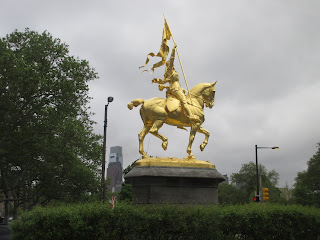
















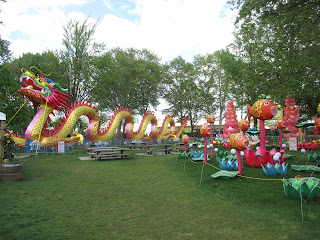



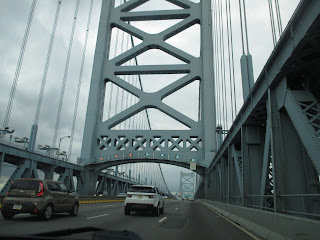





















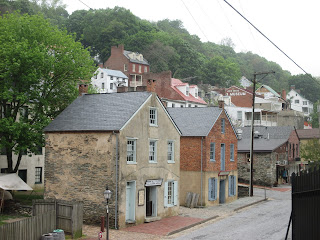











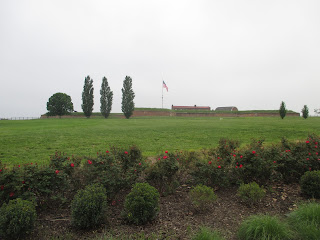









































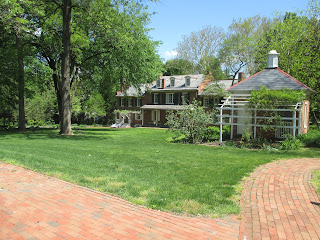




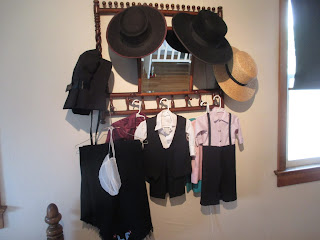


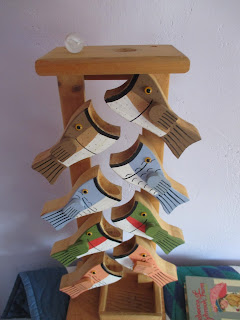






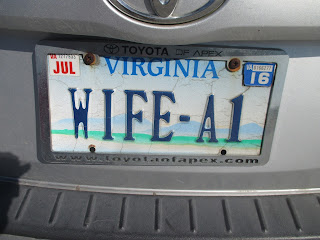
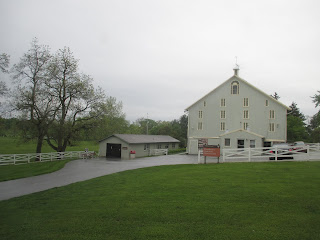





























































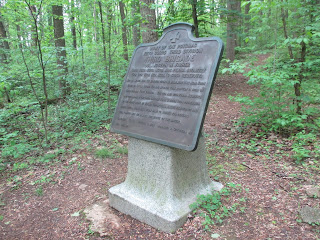

No comments:
Post a Comment